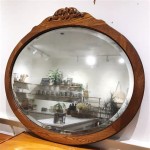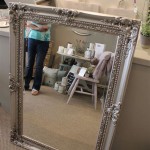Mirrors in Art: Symbolism
Mirrors, with their reflective surfaces, have captivated artists for centuries. Beyond their practical function, mirrors possess a rich symbolic weight, representing a multitude of concepts across various cultures and artistic movements. Their ability to replicate reality, albeit reversed, makes them potent tools for exploring themes of identity, self-awareness, vanity, illusion, and the passage of time.
One of the most prevalent symbolic interpretations of mirrors in art is the representation of self-examination and introspection. The act of gazing into a mirror prompts reflection, both literally and figuratively. Artists have employed this symbolism to depict characters confronting their inner selves, grappling with their flaws, or contemplating their mortality. This can be observed in portraits where the subject is depicted with a mirror, often revealing a hidden aspect of their personality or a private moment of contemplation.
Vanitas paintings, a genre popular in 17th-century Dutch art, frequently utilize mirrors as symbols of vanity and the ephemeral nature of life. Alongside other symbolic objects like skulls, wilting flowers, and extinguished candles, mirrors serve as reminders of mortality and the fleeting nature of beauty. They reflect the viewer's own image, prompting contemplation of their own mortality and the inevitable passage of time. The reflection in the mirror becomes a memento mori, a reminder of the transient nature of earthly existence.
Mirrors can also symbolize truth and illusion. While they offer a reflection of reality, it is a reversed image, a distorted perspective. This duality makes them apt symbols for exploring the deceptive nature of appearances and the difference between perception and reality. Artists may use distorted reflections or fragmented mirror images to represent the subjective nature of truth and the limitations of human perception.
The concept of duality is further explored through mirrors by representing the conscious and subconscious mind. The mirror image can be seen as a double, a representation of the hidden self. This interpretation taps into the psychological aspects of reflection, suggesting that the mirror reveals not only the outward appearance but also the inner thoughts and emotions that may be concealed from the world.
In some cultures and mythologies, mirrors hold spiritual or magical significance. They are often associated with portals to other worlds, gateways to the supernatural, or instruments for divination. This symbolic meaning lends itself to artistic depictions of fantasy, mythology, and the exploration of the unknown. Mirrors can represent a bridge between the physical and spiritual realms.
The use of mirrors in art also reflects the artistic process itself. The act of painting can be seen as a form of mirroring, where the artist reflects their own vision and interpretation of the world onto the canvas. Mirrors can be used to symbolize the artist's role as an observer and interpreter of reality.
Throughout art history, specific works have employed mirrors to great symbolic effect. Diego Velázquez's "Las Meninas" (1656) is a prime example. The complex interplay of mirrors and reflections within the painting creates ambiguity, challenging the viewer's perception of reality and illusion, and blurring the boundaries between the artwork and the observer. The painting invites viewers to consider their own role in the act of seeing and interpreting.
Another notable example is Jan van Eyck's "Arnolfini Portrait" (1434). The convex mirror in the background reflects the entire scene, including the artist himself, and serves multiple symbolic purposes, possibly representing the all-seeing eye of God or acting as a witness to the marriage depicted in the painting. The meticulous detail of the reflection highlights the artist's skill and mastery of perspective.
Caravaggio's "Narcissus" (1597-99) depicts the mythological figure entranced by his own reflection. The painting utilizes the mirror to explore themes of self-obsession, vanity, and the destructive nature of unchecked desire. Narcissus's inability to recognize the illusion of his reflection ultimately leads to his demise.
These are but a few examples of the multifaceted symbolism of mirrors in art. Their ability to reflect, distort, and reveal makes them powerful tools for artists seeking to explore complex themes related to identity, perception, and the human condition. The enduring presence of mirrors in art throughout history testifies to their potent symbolic resonance and their continued capacity to fascinate and provoke contemplation.

Symbols In Art What S There The Mirror Arthive

The Mirror And Its Symbolic Meaning In Art History Artcentrica

The Mirror And Its Symbolic Meaning In Art History Artcentrica

Artdependence Symbolism In Art Anish Kapoor Mirrors

Reflecting The Self Mirrors In Contemporary Art Elephant

The Mirror As A Symbol And Metaphor In Art Modern Society

Mirror Symbolism Symbol Sage Symbols Alchemy Wisdom

Reflecting The Invisible Or Distorting Visible Mirrors In Art Dailyart

The Paris Review Objects Of Despair Mirrors

Top 10 Mirror Art Artists Artland








